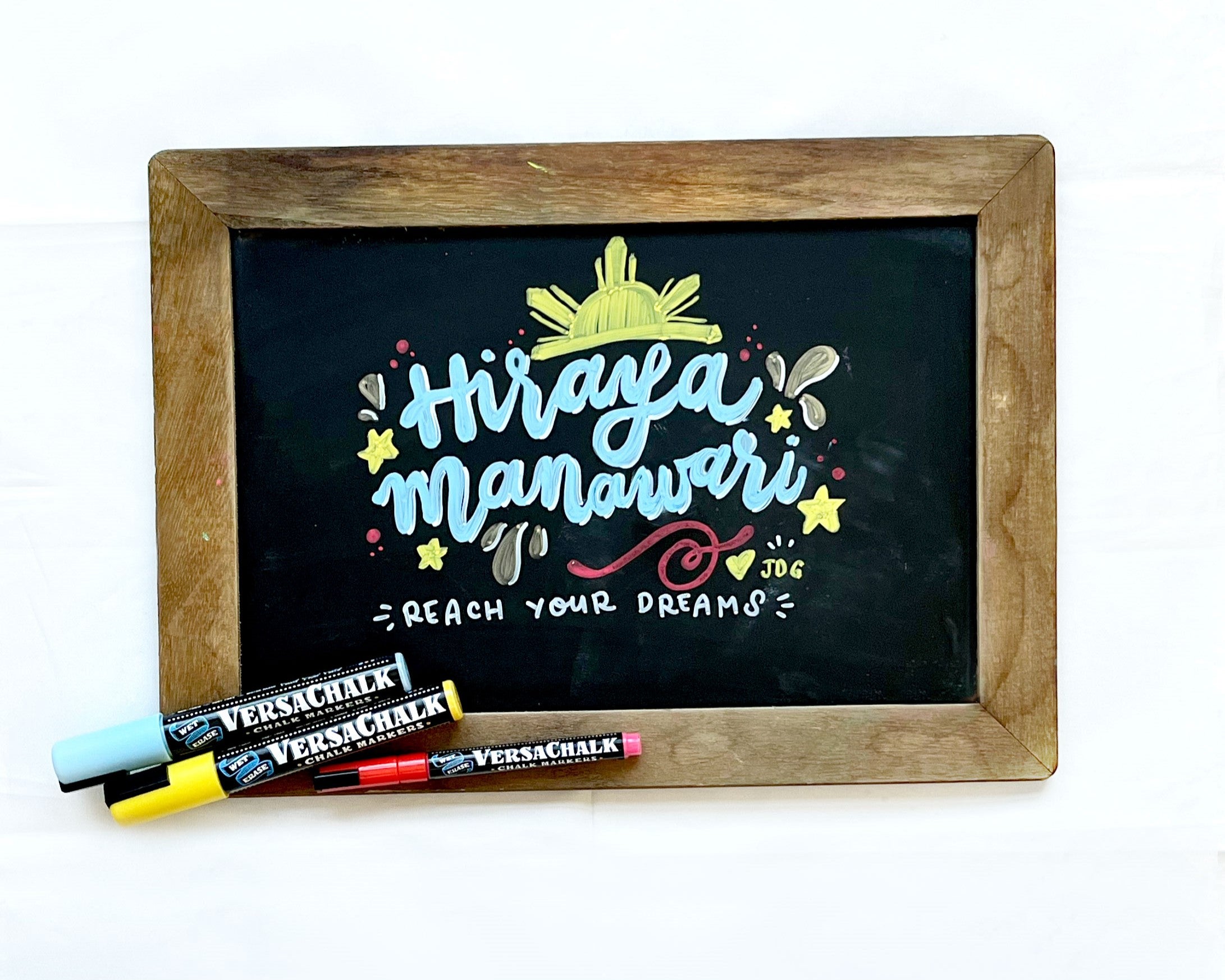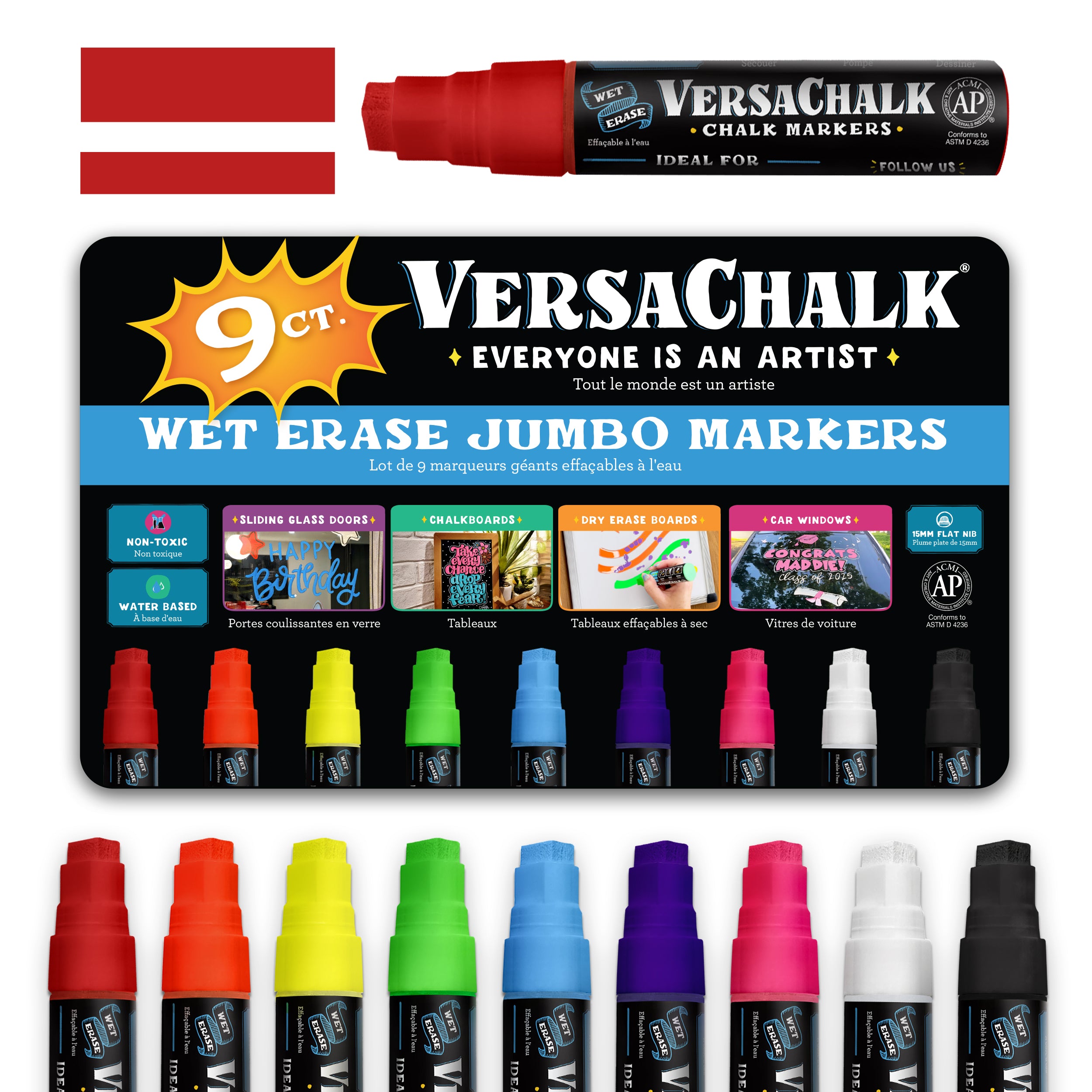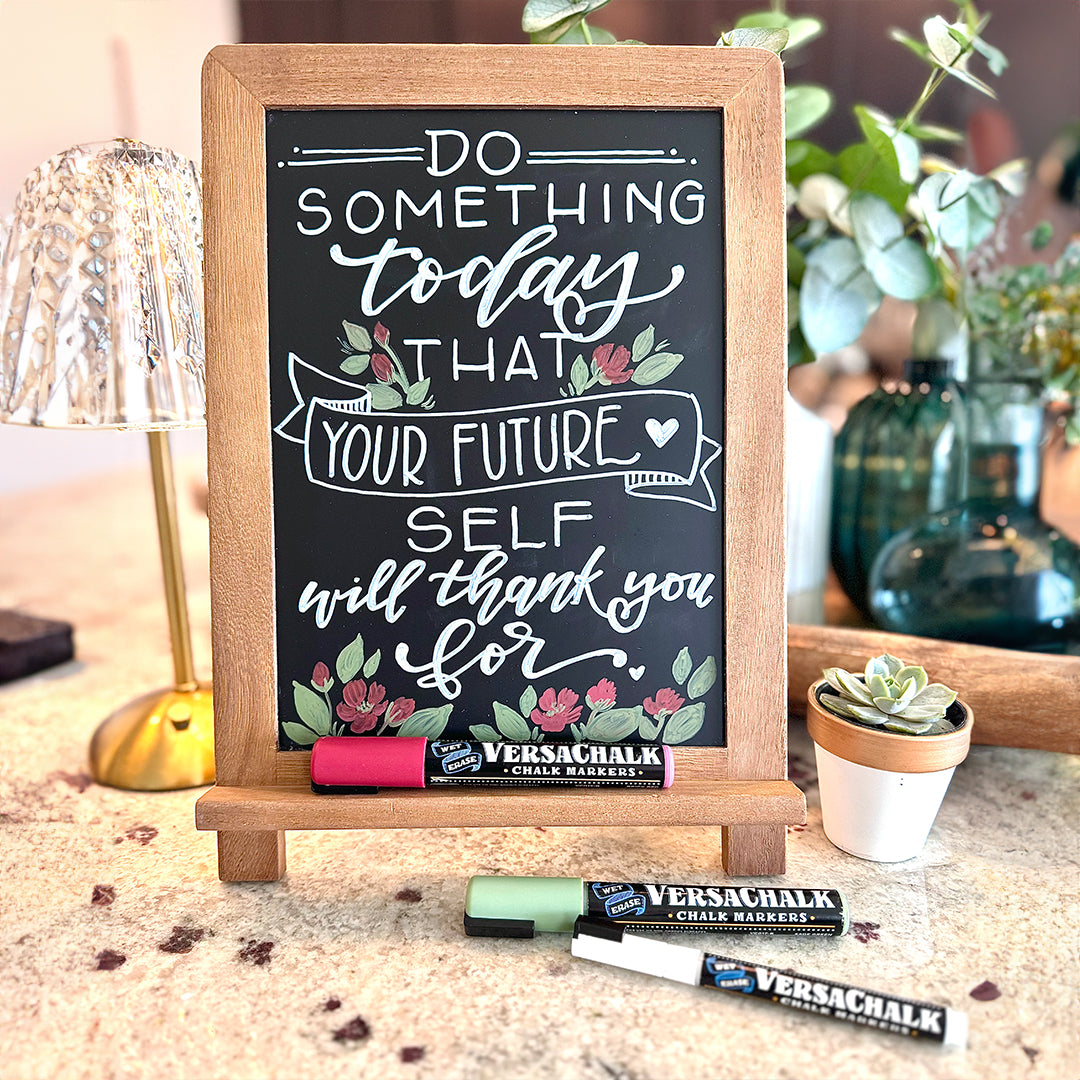
6 Notable Impacts of Chalkboard on Language Learning at Home
If you ever found yourself doodling verb conjugations or crafting sentence diagrams at school, you're not alone. A lot of us have a love for linguistic creativity. Having you here on this page already says enough (wink!).
We're here to unravel how a simple chalkboard can enhance language learning, as well as its six not-so-secret impacts in shaping polyglots and creative language learners at the comfort of your home.

Ah, the chalkboard – that trusty sidekick in creative and interactive language learning. It's true that the role of visual aids cannot be overstated; as evidenced by various studies on chalkboard benefits for language learners. But what exactly makes this simple tool so effective?
Intrigued? Well, get ready because we're about to explore how this seemingly simple tool transforms the language-learning game.
In this blog, we'll explore the six biggest impacts of chalkboards on language learning, shedding light on how this classic teaching tool can significantly enhance your language learning experience at home.
How Chalkboards Help Language Learning at Home
For decades, educators have valued chalkboards for their availability, flexibility, and adaptability as teaching tools. These boards serve multiple functions, such as:- presenting new lecture information
- engaging students in problem-solving
- eliciting diverse ideas
- boosting student motivation
- promoting confidence in the class
- facilitating activities in higher education settings
Both teachers and students actively utilize boards in these educational scenarios. Gladly, you can apply these concepts and enjoy the benefits of chalkboards at home, too.

Before we dive into the interesting part, imagine this: You, with chalk in hand (instead of high-tech tools such as digital tablets and pens), reminiscing classroom nostalgia.
You're left with a question: "How can I unlock the potential of a chalkboard in everyday language learning?"
Fret not! By the end of this read, you'll be scribbling down notes, embracing language learning techniques, and perhaps overcoming language barriers with chalkboards. Let's begin!
1. Enhanced Memory Retention
Memory is a crucial aspect of language acquisition, and chalkboards play a special role in improving retention. Even at home, you can utilize the chalkboard to write new vocabulary words or grammar rules, allowing you to visualize and remember them better. Plus, the act of writing itself helps with memory retention.
A 2020 research indicates that people acquire knowledge more effectively when information is presented through various modalities, particularly through visual means. Among these visual language learning tools available, these stand out as perhaps the most straightforward and impactful:
2. Interactive Learning Space
Creating an interactive atmosphere is essential for language learners. Luckily, chalkboards provide a hands-on approach, fostering engagement and participation, even when you are doing this alone. You can interact with the board directly, drawing and writing whatever comes to mind. This helps you better understand grammar rules by allowing yourself to physically manipulate and visualize the concepts you want to learn.
Additionally, chalkboards allow you to correct mistakes easily and provide input or comments on areas you want to improve more on. By the end of the day, this process promotes critical thinking and problem-solving skills while also building confidence in yourself.
3. Fostering Creativity in Language Expression
There is no doubt that most language learners struggle with expressing themselves in their target language. However, a chalkboard can be a great tool for fostering creativity and improving expression skills.
With a chalkboard, you have the freedom to experiment with different sentence structures, vocabulary words, and phrasing without the pressure of a permanent written record. This allows you to take risks and try out new ways of communicating in your target language.
Furthermore, using different colored chalks can also add an element of fun and playfulness to the process, making it less daunting and more enjoyable. You can even draw pictures or diagrams to represent ideas and concepts that may be difficult to express through words alone.
Overall, a chalkboard provides a safe space for you to explore your creativity and develop your unique style of expression.
4. Improved Comprehension through Visualization
Visual representation is a powerful tool for enhancing comprehension. Did you know? Chalkboards aid in visualizing complex language concepts, making them more accessible and comprehensible for language learners. By writing and drawing on the board, you can see how words are connected and how sentences are structured in a concrete way.
For example, when learning grammar rules, such as verb conjugations or sentence structure, you can visualize these concepts through diagrams and charts drawn on the chalkboard. This not only helps you understand the concept better but also allows for easier recall and retention of the information.
Moreover, visual aids can be used to enhance vocabulary learning. By drawing pictures or symbols next to new vocabulary words, you'll have a visual representation that can connect with the word's meaning. This makes it easier for you to remember the word and its associated meaning, ultimately improving your overall comprehension of the language.
5. Personalized Language Learning Experience
You can learn a language using personalized platforms such as chalkboards. This tool serves as a canvas for you to create your own learning experience. You can use it to write down new vocabulary words, grammar rules, and even practice writing sentences or short paragraphs - at your own pace.
To customize your learning pace, you can spend more time on difficult concepts or move quickly through easier ones. This flexibility enables you to tailor your language learning journey according to your individual needs and goals. This means you can easily review and revise any information whenever necessary.
When you can see how far you've come and which areas you need to focus on more, you'll stay motivated and have a clear understanding of your strengths and weaknesses.
6. Overcoming Language Barriers
Chalkboards have been a staple in classrooms for centuries, and for good reason. These visual aids play a crucial role in breaking down language barriers and creating an inclusive learning environment for people of all backgrounds. Little do we know, chalkboards are also perfect for language learning at home.
One of the main benefits of using chalkboards in language learning is that they provide a universal platform for communication. Whether you're learning English, Spanish, Mandarin, or any other language, such as Tagalog! If your goal is to learn a new language, here's what you can do.
Below, Janie de Guzman, a "creative gal," was able to use her talents in arts and crafts to transform a simple tabletop chalkboard into a new language-learning tool, making it easily visible and accessible for daily practice.

The phrase "Hiraya Manawari" means "Hope it comes to pass." It is a commonly used Tagalog expression, often used as a wish or a prayer for something good to happen. Janie wrote this phrase using the vibrant sets of VersaChalk Vivid and Classic chalk markers.

Janie also wrote and drew a "Sampaguita," the Philippine national flower. With this, practicing Tagalog while appreciating the country's beauty has never been easier.

Lastly, the "Bahay Kubo" or Nipa Hut is the Philippines' traditional house. Janie used this as an opportunity to learn a Filipino vocabulary related to the ethnicity's spirit of "Bayanihan" or one community. Filipinos embraced this spirit by helping their neighbors move houses or the "bahay kubo" during ancient times.
With the help of VersaChalk markers, Janie was able to illustrate the simple features of a "Bahay Kubo" made of bamboo stairs, windows, and a roof made of coconut leaves.
Wrap Up
Chalkboards as visual aids have significant impacts on language learning. Not only does it make the learning experience more engaging and creative, but it also helps you understand and remember words and phrases better without leaving home.
You can even incorporate cultural elements into these visuals, as Janie did with the "Bahay Kubo," helping you gain a deeper understanding of the language's roots and customs.
So why not add some fun colors to your own language learning journey? You never know what you may discover while also improving your language and art skills!
While you're here, join our community and never miss out on our latest tips, tricks, and resources on a road to boundless self-improvement!
Subscribe to our newsletter by entering your email below and stay ahead of all the latest content updates and exclusive offers for VersaChalk products.





